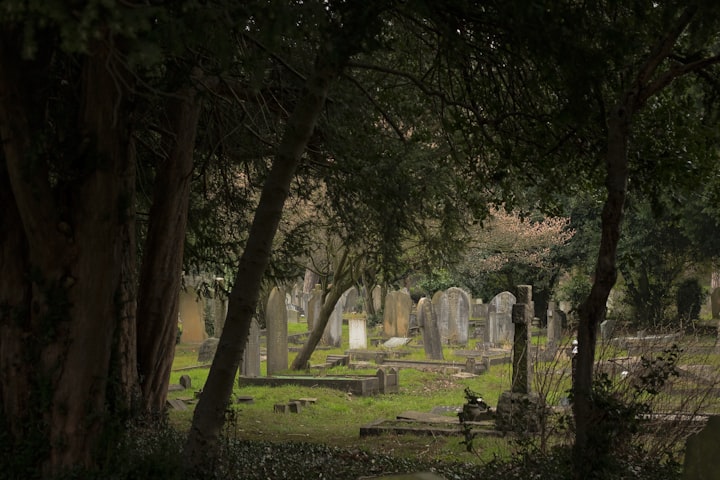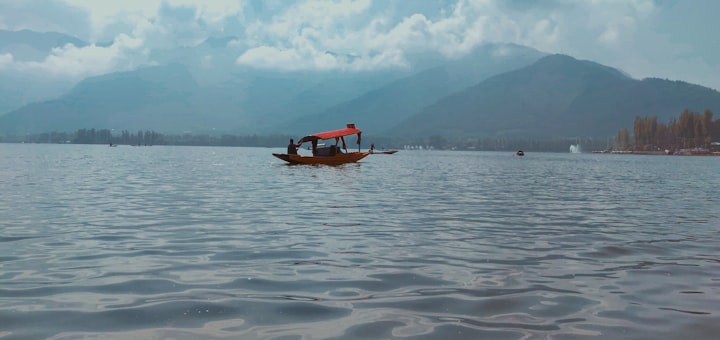Flooding Caskets and Floating Corpses
Louisiana’s burial practices are not viable in the face of accelerating climate change.

Casket flooding has been a problem in Louisiana longer than climate change, but as sea levels rise and hurricanes become more powerful and frequent, burial solutions in the state need to evolve — and fast. Louisiana loses land the size of a football field to the rising tide every hour. But for Louisiana’s dead, the rising tides of climate change isn’t a nebulous prediction but a current reality.
While combing the swamps for caskets washed astray from 2005’s Hurricane Rita, shocked authorities found caskets missing since 1957’s Hurricane Audrey. After the floodwaters of 2012’s Hurricane Isaac washed away, horrified searchers found that about 200 of the caskets that washed up on Mississippi River levees were older and made of wood. These flimsy coffins broke apart in the forceful tide which scattered human remains all up the river.
The Great Flood of 2016 damaged 35 graveyards in Louisiana, according to the Louisiana Department of Health. One of the hardest hit was the Plainview Cemetery in East Baton Rouge, which saw caskets spilling out of water-clogged vaults. Ultimately, the flooding affected 50 graves at Plainview. It damaged only 10 graves in the Evening Star Baptist Church Cemetery in East Baton Rouge, but its carnage exposed human remains and a few caskets floated into the nearby forest.
In cities like Baton Rouge, it is more common to build cement vaults just below ground level and bury the casket inside. This is more a cultural preference than one to deal with the regular floods, and these vaults are often uprooted in storms. Floodwaters weaken the vault’s airtight seal, so caskets can pop out from a flood or hurricane.
…
After recovering the bodies, identifying them is another great challenge. The infamous Hurricane Katrina surfaced about 1500 graves in 2005. Not only were the living devastated, but also some buried dead who washed away with the pulsing floodwaters.
Afterward, Louisiana introduced legislation that required identifying information on every new coffin to prevent another scramble to put names to the displaced dead. But labels and death certificates usually wash away or get destroyed in the disaster that unearthed the casket in the first place, so this law had limited success.
Some casket models have a small alcove in which a glass tube can be inserted, containing a death certificate. But these are often filled out in ink that smudges in a flood or aren’t filled out at all. When placed elsewhere, the death certificate faces damage from the floodwaters making it illegible.
The cost and regulatory loopholes for uprooting graves and relocating the entire cemetery make it difficult to move them to a more inland location. As per some regulations in some areas, the next of kin must give permission before anyone moves the grave. Tracking down the distant relatives of long-dead individuals in older cemeteries makes this a costly and time-consuming process.
Most graveyards have an endowment fund that is set up to cover the maintenance costs of graves long after the cemetery is no longer profitable. But often these accounts can’t even cover maintenance, much less a major move of every grave.
Many newer, private cemeteries operate as perpetual-care sites, in which the family of the deceased pay into an escrow account to ensure the maintenance of a family member’s grave.
But many older cemeteries maintained by churches don’t have these protections and paying for the reburial of these disturbed caskets and the body inside falls on the family. According to a FEMA guideline for the Great Flood of 2016, both private and non-profit cemeteries are ineligible for disaster assistance reimbursement.
There are some FEMA funds for individuals who can prove damage to a family member’s grave from a disaster, but no large-scale funds are available. As sea levels rise in Louisiana, so many cemeteries are in the disaster area that helping them all is impossible.
It’s not only the deceased’s family that suffer from the degradation of a cemetery. Headstones are often used for genealogical research, as stone tends to last longer than any paper documents. Headstones also show reverence to the art and culture of the dead person’s time and place.
The stately cemeteries of New Orleans are masterfully crafted marble mazes, the centerpiece of a bygone era with a lasting cultural impact on the multicultural city. The immaculate gravestones and marble work in these cemeteries were made by masters of their craft and distinguished artists in their own right.
Florville Foy was one such master marble cutter. He was a free black man, born in 1819, the son of a French immigrant who had fought in the Napoleonic Wars and a free black woman, a native of New Orleans.
Florville was raised in an artistic and bohemian household where he learned sculpting, marble cutting, and writing from his multifaceted father. After leaving the tutelage of his father, he quickly found work crafting marvelous tombs with meticulously detailed carvings. He was so highly sought that he eventually employed nine artisans under him.
After living together for 35 years, he married a white woman from Mississippi in 1885 during a short 20 year period of legalized interracial marriage in Louisiana.
…
Cities all along the Gulf of Mexico have dealt with this issue in various ways with equally varying measures of success. Some cemeteries cover graves with concrete and others tie down tombs using strong straps. As Louisiana explores avenues of improvement in disaster response, other regions facing coastal flooding and erosion will look to the state for possible solutions.
Low-lying Louisiana is on America’s front line of accelerating climate change and the viability of burial practices for much of Louisiana will be unable to survive unscathed.
About the Creator
Raisa Nastukova
Freelance journalist focused on stories of both Kashmir culture and society as well as the rising tide of climate change.






Comments
There are no comments for this story
Be the first to respond and start the conversation.